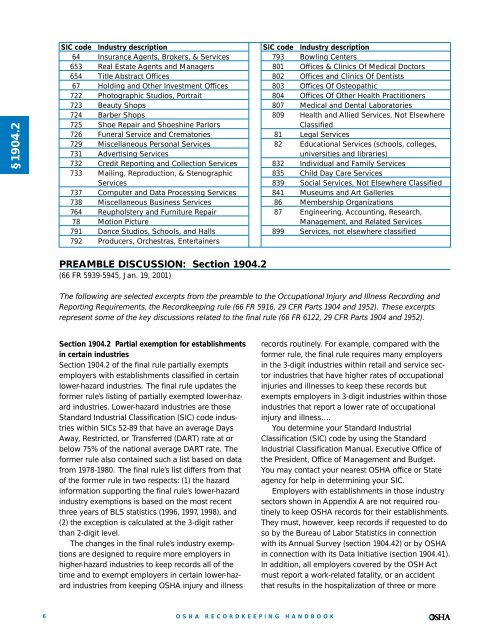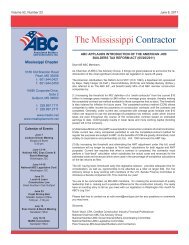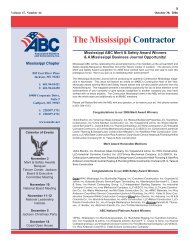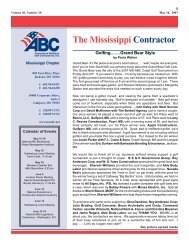§1904.2SIC code Industry description64 Insurance Agents, Brokers, & Services653 Real Estate Agents and Managers654 Title Abstract Offices67 Holding and Other Investment Offices722 Photographic Studios, Portrait723 Beauty Shops724 Barber Shops725 Shoe Repair and Shoeshine Parlors726 Funeral Service and Crematories729 Miscellaneous Personal Services731 Advertising Services732 Credit Reporting and Collection Services733 Mailing, Reproduction, & StenographicServices737 Computer and Data Processing Services738 Miscellaneous Business Services764 Reupholstery and Furniture Repair78 Motion Picture791 Dance Studios, Schools, and Halls792 Producers, Orchestras, EntertainersSIC code Industry description793 Bowling Centers801 Offices & Clinics Of Medical Doctors802 Offices and Clinics Of Dentists803 Offices Of Osteopathic804 Offices Of Other Health Practitioners807 Medical and Dental Laboratories809 Health and Allied Services, Not ElsewhereClassified81 Legal Services82 Educational Services (schools, colleges,universities and libraries)832 Individual and Family Services835 Child Day Care Services839 Social Services, Not Elsewhere Classified841 Museums and Art Galleries86 Membership Organizations87 Engineering, Accounting, Research,Management, and Related Services899 Services, not elsewhere classifiedPREAMBLE DISCUSSION: Section 1904.2(66 FR 5939-5945, Jan. 19, 2001)The following are selected excerpts from the preamble to the Occupational Injury and Illness Recording andReporting Requirements, the <strong>Recordkeeping</strong> rule (66 FR 5916, 29 CFR Parts 1904 and 1952). These excerptsrepresent some of the key discussions related to the final rule (66 FR 6122, 29 CFR Parts 1904 and 1952).Section 1904.2 Partial exemption for establishmentsin certain industriesSection 1904.2 of the final rule partially exemptsemployers with establishments classified in certainlower-hazard industries. The final rule updates theformer rule’s listing of partially exempted lower-hazardindustries. Lower-hazard industries are thoseStandard Industrial Classification (SIC) code industrieswithin SICs 52-89 that have an average DaysAway, Restricted, or Transferred (DART) rate at orbelow 75% of the national average DART rate. Theformer rule also contained such a list based on datafrom 1978-1980. The final rule’s list differs from thatof the former rule in two respects: (1) the hazardinformation supporting the final rule’s lower-hazardindustry exemptions is based on the most recentthree years of BLS statistics (1996, 1997, 1998), and(2) the exception is calculated at the 3-digit ratherthan 2-digit level.The changes in the final rule’s industry exemptionsare designed to require more employers inhigher-hazard industries to keep records all of thetime and to exempt employers in certain lower-hazardindustries from keeping <strong>OSHA</strong> injury and illnessrecords routinely. For example, compared with theformer rule, the final rule requires many employersin the 3-digit industries within retail and service sectorindustries that have higher rates of occupationalinjuries and illnesses to keep these records butexempts employers in 3-digit industries within thoseindustries that report a lower rate of occupationalinjury and illness….You determine your Standard IndustrialClassification (SIC) code by using the StandardIndustrial Classification Manual, Executive Office ofthe President, Office of Management and Budget.You may contact your nearest <strong>OSHA</strong> office or Stateagency for help in determining your SIC.Employers with establishments in those industrysectors shown in Appendix A are not required routinelyto keep <strong>OSHA</strong> records for their establishments.They must, however, keep records if requested to doso by the Bureau of Labor Statistics in connectionwith its Annual Survey (section 1904.42) or by <strong>OSHA</strong>in connection with its Data Initiative (section 1904.41).In addition, all employers covered by the OSH Actmust report a work-related fatality, or an accidentthat results in the hospitalization of three or more6<strong>OSHA</strong> RECORDKEEPINGHANDBOOK
employees, to <strong>OSHA</strong> within 8 hours (section1904.39).In 1982, <strong>OSHA</strong> exempted establishments in anumber of service, finance and retail industries fromthe duty to regularly maintain the <strong>OSHA</strong> Log andIncident Report (47 FR 57699 (Dec. 28, 1982)). Thisindustry exemption to the Part 1904 rule was intendedto “reduce paperwork burden on employers withoutcompromising worker safety and health.” …Although the 1982 Federal Register notice discussedthe possibility of revising the exempt industrylist on a routine basis, the list of partially exemptindustries compiled in 1982 has remained unchangeduntil this revision of the Part 1904 rule…....[N]on-mandatory Appendix A of the final ruleidentifies industries for exemption at the 3-digit SICcode level. Although this approach does make the listof exempt industries longer and more detailed, italso targets the exemption more effectively than didthe former rule’s list. For example, the final rule doesnot exempt firms in many of the more hazardous 3-digit SIC industries that are embedded within lowerrate 2-digit SIC industries. It does, however, exemptfirms in relatively low-hazard 3-digit SIC industries,even though they are classified in higher hazard 2-digit SIC industries. Where Days Away, Restricted, orTransferred (DART, formerly LWDI) rate calculationsexempt all of the 3-digit SIC industries within a given2-digit industry, the exempt industry list in AppendixA displays only the 2-digit SIC classification. Thisapproach merely provides a shorter, simpler list.For multi-establishment firms, the industryexemption is based on the SIC code of each establishment,rather than the industrial classification of afirm as a whole. For example, some larger corporationshave establishments that engage in differentbusiness activities. Where this is the case, eachestablishment could fall into a different SIC code,based on its business activity. The StandardIndustrial Classification manual states that the establishment,rather than the firm, is the appropriate unitfor determining the SIC code. Thus, depending onthe SIC code of the establishment, one establishmentof a firm may be exempt from routine recordkeepingunder Part 1904, while another establishment in thesame company may not be exempt….<strong>OSHA</strong> has evaluated other approaches but hasdecided that the 3-digit DART rate method is bothsimpler and more equitable than the former 2-digitmethod. By exempting lower-hazard industry sectorswithin SICs 52-89, <strong>OSHA</strong> hopes both to concentrateits recordkeeping requirements in sectors that willprovide the most useful data and to minimize paperworkburden. No exemption method is perfect: anymethod that exempts broad classes of employersfrom recordkeeping obligations will exempt somemore hazardous workplaces and cover some lesshazardous workplaces. <strong>OSHA</strong> has attempted to minimizeboth of these problems by using the most currentinjury and illness statistics available, and byapplying them to a more detailed industry level withinthe retail, financial and service sectors than wasformerly the case. <strong>OSHA</strong> has also limited the scopeof the exemptions by using an exemption thresholdthat is well below the national average, includingonly those industries that have average DART ratesthat are at or below 75% of the national averageDART rate. The rule also limits the exempt industriesto the retail, financial and service sectors, which aregenerally less hazardous than the manufacturingindustry sector….The final rule makes clear that, when a “leased”or “temporary” employee is supervised on a day-todaybasis by the using firm, the using firm mustenter that employee’s injuries and illnesses on theusing firm’s establishment Log and other records.Injuries and illnesses occurring to a given employeeshould only be recorded once, either by the temporarystaffing firm or the using firm, depending onwhich firm actually supervises the temporaryemployees on a day-to-day basis. (see the discussionfor Section 1904.31, Covered employees, for an indepthexplanation of these requirements.)…After a review of the recent BLS data, <strong>OSHA</strong>’s ownexperience, and the record of this rulemaking, <strong>OSHA</strong>has decided that it is appropriate to require firms inindustries within the SIC 01 through 51 codes to complywith <strong>OSHA</strong>’s requirements to keep records. Thus,the final rule, like the proposed rule and the rule publishedin 1982, does not exempt firms with more than10 employees in the industry divisions of agriculture,mining, construction, manufacturing, wholesaletrade, transportation and public utilities (SICs 01-52)from routine recordkeeping.Although <strong>OSHA</strong> no longer restricts its inspectiontargeting schemes to employers in these SICs, theseindustries have traditionally been, and continue tobe, the focus of many of the Agency’s enforcementprograms. <strong>OSHA</strong> believes that it is important for largeremployers (i.e., those with more than 10 employees)in these industries to continue to collect andmaintain injury and illness records for use by theemployer, employees and the government. As notedin the comments there is a wide variation in injury/illnessrates among establishments classified in theseindustries. Further, as a whole, these industries con-§1904.2<strong>OSHA</strong> RECORDKEEPINGHANDBOOK7
- Page 1 and 2: www.osha.govOSHARecordkeepingHandbo
- Page 3 and 4: OSHARecordkeeping HandbookThe Regul
- Page 5 and 6: ContentsRecordkeeping HandbookRoadm
- Page 7 and 8: Section 1904.40Providing records to
- Page 9 and 10: Section 1904.0Purpose(66 FR 6122, J
- Page 11 and 12: Section 1904.1Partial exemption for
- Page 13: Section 1904.2Partial exemption for
- Page 17 and 18: Partial Exemptions for Employers Un
- Page 19 and 20: Section 1904.4Recording criteria(66
- Page 21 and 22: Section 1904.5Determination of work
- Page 23 and 24: (b)(7) How do I decide if a case is
- Page 25 and 26: well, including providing informati
- Page 27 and 28: This exception, which responds to i
- Page 29 and 30: or she is in the work environment a
- Page 31 and 32: have occurred but for the occupatio
- Page 33 and 34: considered work-related. If an empl
- Page 35 and 36: Question 5-12. Is work-related stre
- Page 37 and 38: • The doctor described the illnes
- Page 39 and 40: Scenario 7:• A site hired numerou
- Page 41 and 42: Letter of interpretation related to
- Page 43 and 44: These principles should be applied
- Page 45 and 46: The problem with the response is tw
- Page 47 and 48: Section 1904.6Determination of new
- Page 49 and 50: the Guidelines stated that “the a
- Page 51 and 52: estricted work. If the case is a pr
- Page 53 and 54: • The doctor also prescribed the
- Page 55 and 56: • The employees were under the di
- Page 57 and 58: Section 1904.7General recording cri
- Page 59 and 60: (iii) Do I have to record restricte
- Page 61 and 62: of the length of time the employee
- Page 63 and 64: then result in days away from work
- Page 65 and 66:
A partial day of work is recorded a
- Page 67 and 68:
In all other respects, the final ru
- Page 69 and 70:
ments. The Agency believes that the
- Page 71 and 72:
e recorded because it will require
- Page 73 and 74:
However, episodes of fainting from
- Page 75 and 76:
care professional, he or she may al
- Page 77 and 78:
“Other simple means” of removin
- Page 79 and 80:
For purposes of OSHA recordkeeping
- Page 81 and 82:
• When answering the doctor’s q
- Page 83 and 84:
Response: In the recordkeeping regu
- Page 85 and 86:
Letter of interpretation related to
- Page 87 and 88:
Section 1904.8Recording criteria fo
- Page 89 and 90:
caused by contaminated needles and
- Page 91 and 92:
Section 1904.9Recording criteria fo
- Page 93 and 94:
Section 1904.10Recording criteria f
- Page 95 and 96:
hearing loss case that is not relat
- Page 97 and 98:
average of 10 decibels or more at 2
- Page 99 and 100:
argued that because the function of
- Page 101 and 102:
occurs, and where hearing loss can
- Page 103 and 104:
cases in their workplace via analys
- Page 105 and 106:
March 4, 2004Mr. Carl O. Sall, CIHD
- Page 107 and 108:
When the professional evaluating th
- Page 109 and 110:
(2) May I line-out or erase a recor
- Page 111 and 112:
Section 1904.12Recording criteria f
- Page 113 and 114:
These new statistics would add only
- Page 115 and 116:
Sections 1904.13 - 1904.28 Reserved
- Page 117 and 118:
two lines of the OSHA 300 Log to de
- Page 119 and 120:
which replace the OSHA 200 and 101
- Page 121 and 122:
different types of occupational ill
- Page 123 and 124:
OSHA 301 form. These data are usefu
- Page 125 and 126:
LETTERS OF INTERPRETATION: Section
- Page 127 and 128:
Question 2: Under 29 CFR Section 19
- Page 129 and 130:
and has adopted language in the fin
- Page 131 and 132:
Section 1904.31Covered employees(66
- Page 133 and 134:
label assigned to a worker is immat
- Page 135 and 136:
These workers should be evaluated j
- Page 137 and 138:
Response: A case is work-related if
- Page 139 and 140:
Response: Section 1904.31 states th
- Page 141 and 142:
Thank you for your interest in occu
- Page 143 and 144:
year covered by the summary. The su
- Page 145 and 146:
2. Number of employees and hours wo
- Page 147 and 148:
LETTERS OF INTERPRETATION: Section
- Page 149 and 150:
Section 1904.33Retention and updati
- Page 151 and 152:
June 23, 2003Mr. Edwin G. Foulke, J
- Page 153 and 154:
Section 1904.34Change in business o
- Page 155 and 156:
PREAMBLE DISCUSSION: Section 1904.3
- Page 157 and 158:
Incident Report (Forms 300 and 301,
- Page 159 and 160:
workers’ compensation claim. See
- Page 161 and 162:
LETTERS OF INTERPRETATION: Section
- Page 163 and 164:
Letter of interpretation related to
- Page 165 and 166:
Question 3: Using the facts in Ques
- Page 167 and 168:
Section 1904.37State recordkeeping
- Page 169 and 170:
tion, require employers to report f
- Page 171 and 172:
(5) If I receive a variance, may th
- Page 173 and 174:
Section 1904.39Reporting fatalities
- Page 175 and 176:
gation. Therefore, the final rule d
- Page 177 and 178:
Section 1904.40Providing records to
- Page 179 and 180:
ness. The government inspector may
- Page 181 and 182:
Response: The controlling employer
- Page 183 and 184:
FREQUENTLY ASKED QUESTIONS: Section
- Page 185 and 186:
OSHA and the BLS have worked togeth
- Page 187 and 188:
provide copies of the retained reco
- Page 189 and 190:
FREQUENTLY ASKED QUESTIONS: Section
- Page 191 and 192:
Section 1904.46Definitions(66 FR 61
- Page 193 and 194:
of business information. For exampl
- Page 195 and 196:
inconvenience associated with keepi
- Page 197 and 198:
skin disease, respiratory disorder,
- Page 199 and 200:
Question 2: Under 29 CFR Section 19
- Page 201:
www.osha.gov







